It’s easy to recognise that effective communication is at the heart of any successful business. What’s not so easy to grasp, with so much choice, is which communication channels to focus on.
For example, you may prefer to use email as a medium to communicate strategic decisions. But what if the information you need to convey is easier to digest during face-to-face meetings?
You need to identify the channels that are appropriate for your message. The good news is once you decide what you want to say to your team, you can identify the best channels for those communications in a few simple steps.
In this post, we’ll look at:
- What communication channels are
- How to choose the right communication channels
- 5 examples of communication channels
- The 3 best communication tools for small businesses
What are “communication channels”?
In a nutshell, communication channels are mediums through which you can convey a message to its intended audience. For example, phone calls, text messages, emails, video, radio, and social media are all types of communication channels.
In a company, communication channels keep information flowing efficiently. A breakdown in any channel, such as phone lines being down, could leave your employees and customers being seriously misinformed or left in the dark. On the flip side, effective use of different communication channels can enhance productivity and help you make better decisions as a team.
Here are a few other ways to use communication channels:
- Receive and send important messages
- Answer your team’s questions in real-time
- Prompt discussions that encourage teammates to communicate with each other
- Share materials like presentation files and important documents quickly
Communication channels are typically classified as oral and written communications. Within these categories, communication channels can be formal, informal, or unofficial.
An example of a formal communication channel is a slide deck shared during an all-hands meeting, which gives employees a clear idea of the company’s goals. Informal communications, on the other hand, could include group chats addressing work-related issues. Lastly, unofficial communication channels could be any medium that team members use outside of work hours to discuss non-work-related topics.
How to choose the right communication channels
Although it might be tempting to communicate through as many channels as are available, most businesses would benefit from a more strategic approach. Below are a few things to think about before you select a channel for your business messages.
1. Get familiar with your team
It might seem obvious, but the choice of communication channels largely depends on the preferences of your team. Who are they and what channels do they engage with? Do they prefer phone calls, text messages, or some other form of communication?
You could find this out by conducting an employee engagement survey or using employee engagement apps. Knowing where your team hangs out virtually, will help make sure you’re using the right communication channels to talk to them.
2. Consider your message
The type of message is another thing you should take into consideration.
Ask yourself:
- Is the information formal or informal?
- Does it include visuals or text?
- Is the message time-sensitive or trivial?
- Does it need to be easy to find later?
Then, home in on the appropriate communication channels to use. If, for instance, you’re delivering a presentation, you might want to take advantage of video conferencing software that has screen sharing capabilities so that you can share different types of reference materials:
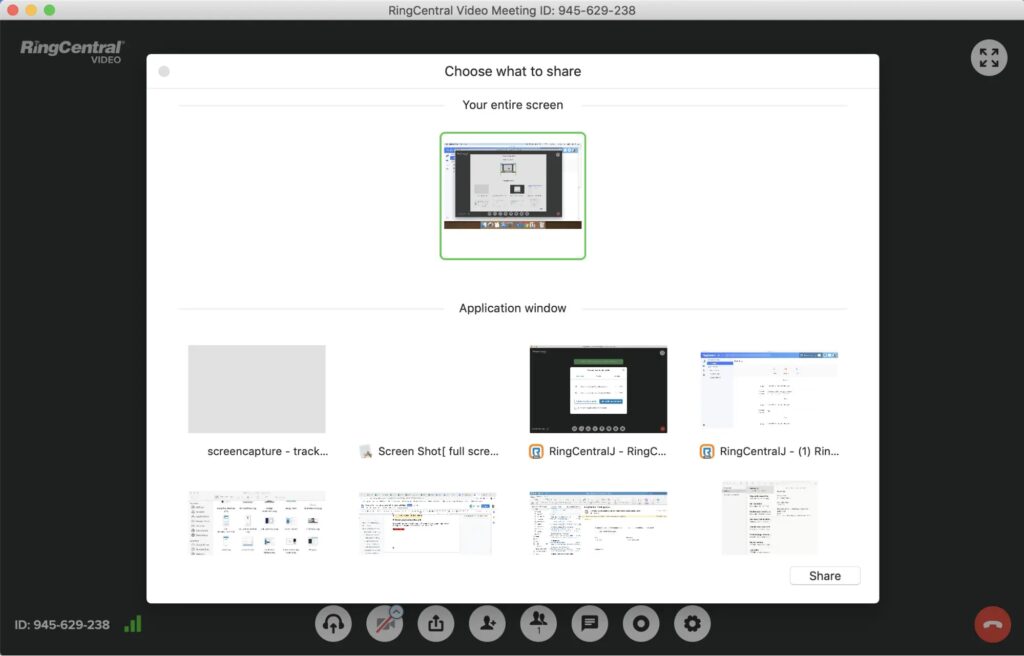
For example, RingCentral Video lets you share your desktop (or any screen, really) in a video meeting.
3. Take a look at your budget
Your budget will also influence your choice of communication channels because you’ll have to invest in the right platforms with the right channels to get your messages across. Ask yourself: Is the channel affordable given your company’s overall budget? What tools are available for each channel? If you’re going to use multiple mediums for business communications, how much money are you willing to invest?
5 examples of communication channels
1. Email
Among the written communication channels for companies, email stands out as the most popular option. You can compose an email and get your message across in a clear, concise manner. If you’re sending something that you’d like to be able to trace or refer to later on, emails are a good option because they can be stored and referred back to via your inbox. The only downside is that employees are inundated with emails every day, so it can be easy for them to miss crucial messages.
So, try a more flexible approach:
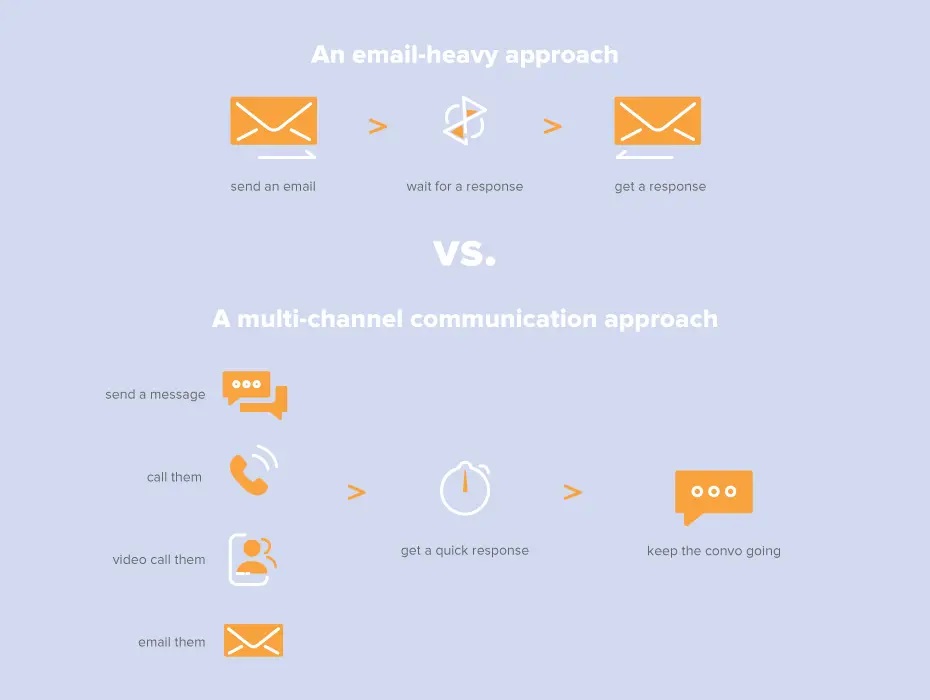
When to use email: When you need to forward a sensitive document or keep a permanent record of communications.
Emails are great, but be careful not to over-rely on communicating through emails—inboxes tend to be overflowing with junk, so it might not be the best way to get a hold of someone. Always have a back-up alternative (like the other options on this list)
2. Video conferencing
Once in the realm of science fiction, video conferencing software has become an almost indispensable part of today’s business landscape:
People can join meetings from locations around the world, whether it’s for one-to-one catch-ups to all-hands meetings with hundreds of people.
This channel also comes to the forefront in certain industries like healthcare, with healthcare professionals using video conferencing to see patients and offer remote treatment. It may take some time to get used to, especially if your employees haven’t participated in a video conferencing session before, but generally it’s pretty easy to pick up.
When to use video conferencing: When you want to communicate strategic decisions or hold discussions with your remote team.
Use an intuitive video conferencing solution (like RingCentral Video—check out a demo of how it works) that makes it easy to participate in virtual meetings.
3. Phone calls
Besides video conferencing, a phone call is a great way to communicate urgent issues and get answers quickly. If you don’t need visuals to communicate your message, a voice call is a little more convenient. Plus, if the person you called isn’t available, you can leave a voice message without being restricted to a certain number of text characters.
That being said, phone calls can incur massive initial costs, especially if you’re using traditional phone lines or systems, like a public branch exchange (PBX) to transfer calls to other members of your team.
If you think you’ll be making lots of international calls, look into a cloud phone system that lets you make calls over the internet. Again, RingCentral is a good option here (especially since the app has voice calling, video conferencing and team messaging all in one place)
When to use phone calls: When you need to communicate something urgently but you don’t need to give a visual demonstration.
Use a voice over internet protocol (VoIP) calling app. This lets you make calls over the internet (no pricey phone lines used here) and eliminates the need to purchase expensive hardware.
4. Instant messaging (IM)
IM, or team messaging, is great for simple and direct communication between teams. You get pinged right away if someone sends you a message, and you can type out a reply in seconds. Some messaging platforms even let you share files and create tasks in your message threads:
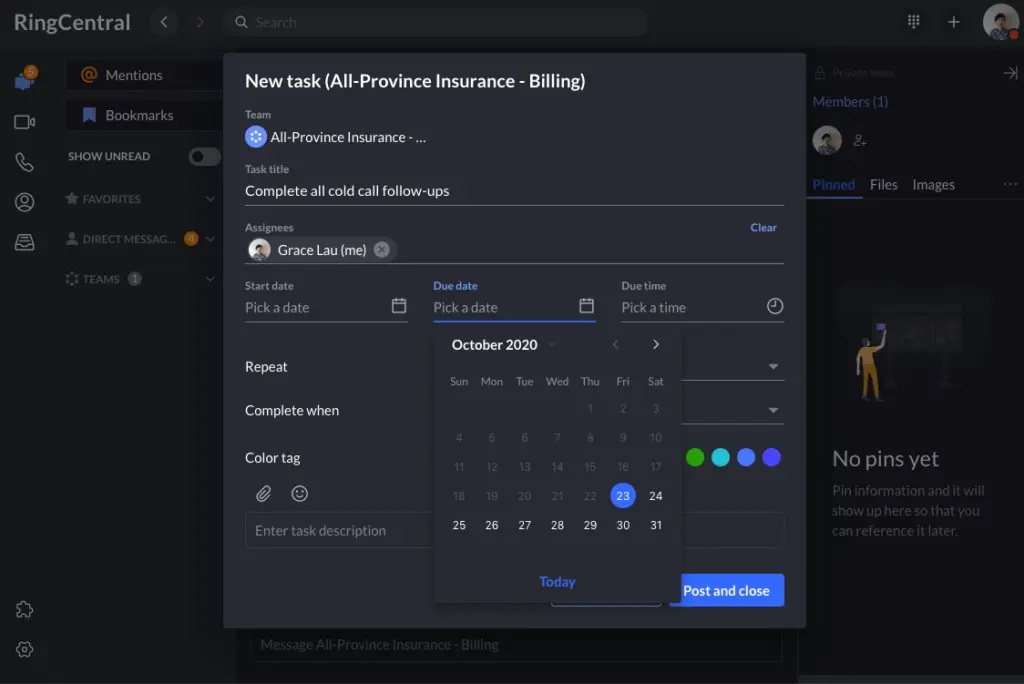
While all of this sounds great, IM channels can get “noisy” if you have your notifications turned on all day. There can be many ad hoc groups, comments, and discussions on various topics depending on how your team uses it, so make sure to customise your notifications or your availability status so that you don’t get disrupted too often:
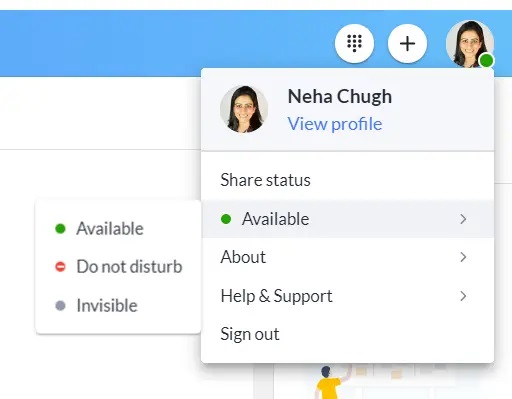
When to use messaging: When you want to collaborate quickly on a project or get an informal opinion.
Use a team messaging tool that makes it easy to sort discussions by topic or group.
5. SMS texting
If your teammates are often away from their desks, then business SMS may be the most efficient way to communicate something urgent. You don’t need an internet connection to send and receive messages, and SMS logs can also be kept and referenced to make sure everyone’s accountable.
Plus, you can get your message across without derailing someone’s focus since they don’t have to open a browser or log in to an app. But mobile phones remain a personal space for most people, so SMS texting should probably be avoided unless it’s something really important.
When to use it: When you want to check in on the status of a project or communicate last-minute requests.
Use simple, clear, and direct language to get your point across. (Remember, you can only use 160 characters in a single text with some providers.)
The 3 best business communication tools for small businesses
Identifying the right channels is a good first step, but you also need the right communication tools to relay your message through different mediums. Here are three options to look at:
1. RingCentral
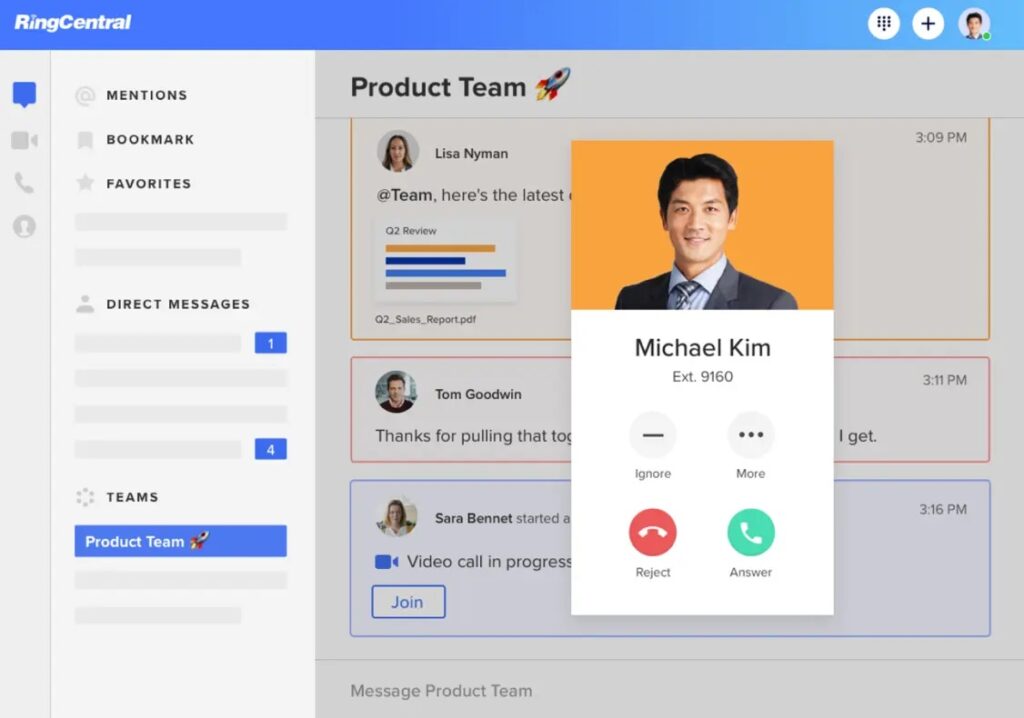
As we mentioned earlier, if you’re looking for an all-in-one communications app that won’t break the bank, RingCentral might be the perfect option for you. Video conferencing. VoIP calls. Instant messaging. You get all of that and more without a phone system or having to download tons of different software.
The other perk is that you can switch easily from a phone call to a video call in the app, just by tapping a button:
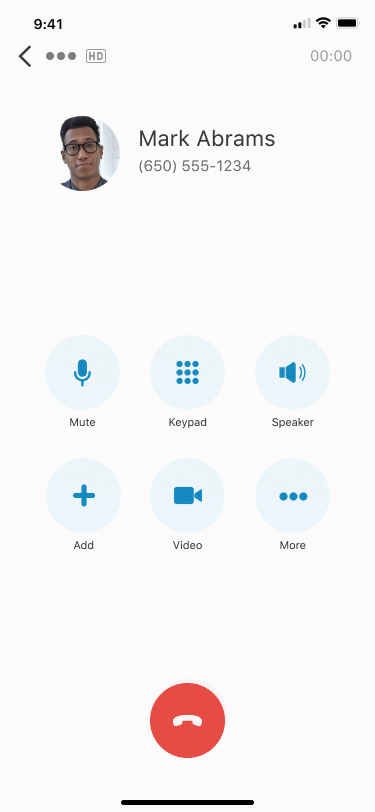
As a UCaaS (unified communications as a service) platform, RingCentral gives you a consistent, unified experience across multiple devices, no matter which channel of communication you choose to use at a particular time. The nice thing about having all these communication channels in one app? You don’t have to pay multiple subscription fees every month for different apps.
Pricing: You can try RingCentral for free, or choose the right plan for you- starting from $16.99/user/month for RingCentral Video Pro +
2. Slenke
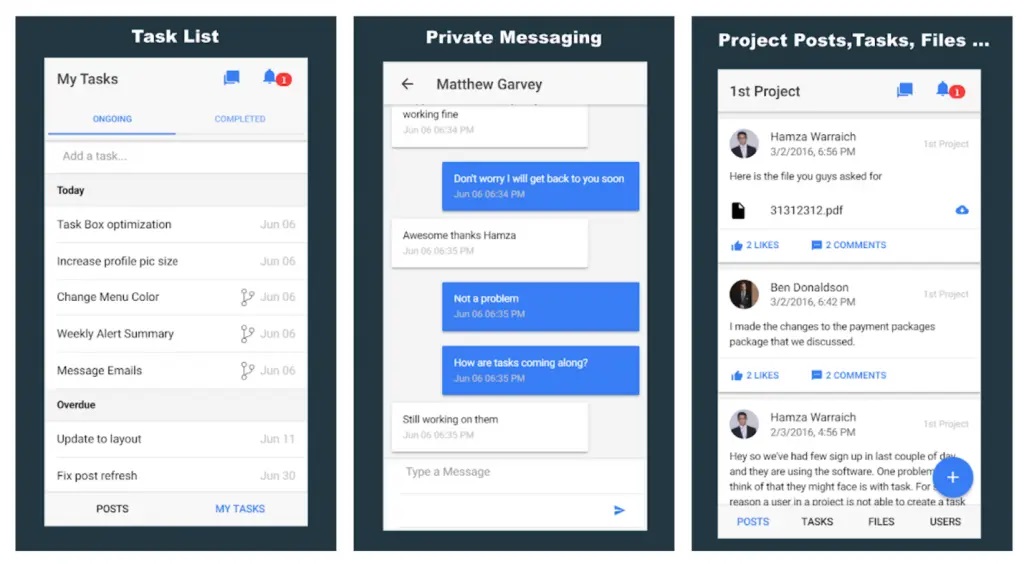
Slenke combines business communication with task and time management. In terms of communication, you can have both team and individual chats, and you can even create messaging boards for participants. All messages and files shared with this tool enjoy top-grade encryption for the utmost safety of your information.
One thing to note: Slenke doesn’t have a built-in video conferencing or screen sharing feature. You’ll need to invest in a standalone video conferencing tool and then integrate it with Slenke for a unified experience.
Pricing: $15 (USD)/user/month (up to 99 users)
3. ContactMonkey internal communications
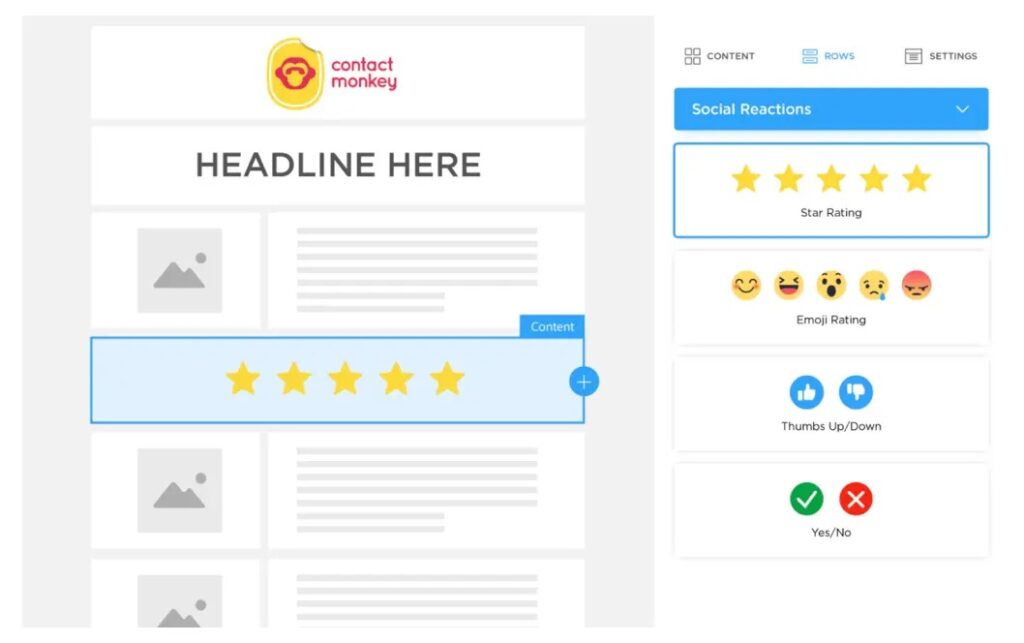
Not everyone’s hopping off the email train. Let’s face it, sometimes, emails are still the best way to communicate with your team.
This is where ContactMonkey comes in. It’s ideal for internal email communications and integrates seamlessly with Outlook or Gmail. That means you can track every email opened and know which messages are being read.
Want to know how individual employees or campaigns are doing? There are advanced analytics for that. Dig into the data to identify your most engaged employees or measure link clicks, email opens, devices, and feedback.
Internal communications often get overlooked because the focus is (often, rightfully) on the customers. But if you need to step up your internal email game, then ContactMonkey has everything you need to analyse the performance of your emails and make logical conclusions based on emerging trends.
Pricing: Custom, based on your needs
Remember, choose your communication channels based on their effectiveness for you
You might have decided that one channel is right for you, but don’t get stuck with it. Experiment with a few channels to see which ones deliver the best results.
For instance, depending on the urgency of your message, you may want to use instant messaging or opt for an even quicker medium like SMS. But there’s no guarantee that these channels will work better than, say, video conferencing.
So take the time to test a few channels, so you’ll know which ones will help improve your communications strategy. Also, make sure, whatever tool you choose offers multiple ways to communicate—you’ll be amazed at how much more efficient and streamlined it’ll make your business communications.
If you’d like more information about how RingCentral can enable your teams to work from anywhere, across a whole range of communication channels click here.
Originally published 12 Apr, 2023, updated 15 Dec, 2023




